Anu: Supreme Ruler Of The Heavenly Abode In Sumerian Pantheon Of Gods
A. Sutherland - AncientPages.com - The Sumerian pantheon included many deities but initially, the most important of them were Anu, Enlil, Enki, and Ninhursag. In this article, we present Anu (also known as An), the Great Father of the Sky who belonged to the oldest generation of Mesopotamian gods.
Cuneiform texts including Sumerian creation accounts and the Babylonian epic Enuma Elish are the main sources that give us knowledge about Anu who had many titles such as lord of constellations, king of gods, spirits, and demons.
In the Assyrian-Babylonian pantheon, he was both, the god of kingship as well as the ruler of heaven.
Anu’s Sumerian cult center was White Temple in the sacred precinct of Kullaba at Uruk (today modern Warka); he was also worshiped in Ur and Lagash.
At first, Anu was the most powerful of the gods, and all the others in the Sumerian Pantheon treated whim respectfully, as he was a great authority; however, he rarely showed up in the myths and hymns of Mesopotamia.
Anu has always been portrayed as being very distant from ordinary people and their daily concerns. It was understood that as a supreme ruler, he must have had other, much more important matters to attend to.
In heaven, he had power over other gods and decided about their functions, privileges, and responsibilities, increasing their status at will. On earth, he discussed kingship, and his decisions were regarded as permanent.
The oldest texts do not mention the origin of Anu. In the Babylonian creation myth Enuma Elish (Tablet I, 11-14)), there is a mention that Anu was the son of a primordial god, Anshar ("whole heaven"), and his consort, Kishar ("whole Earth").
1. When in the height heaven was not named,
2. And the earth beneath did not yet bear a name,
3. And the primeval Apsû, who begat them,
4. And chaos, Tiamat, the mother of them both,—
5. Their waters were mingled together,
6. And no field was formed, no marsh was to be seen;
7. When of the gods none had been called into being,
8. And none bore a name, and no destinies [were ordained];
9. Then were created the gods in the midst of [heaven],
10. Lahmu and Lahamu were called into being [...].
11. Ages increased, [...],
12. Then Anshar and Kishar were created, and over them [...].
13. Long were the days, then there came forth [...]
14. Anu, their son... [...]
Anu is often mentioned as the "father of gods," because many Sumerian deities are considered to be his children. This of course depends on the literary sources, but we find the names of Enki, Nanna, Enlil, Inanna, Nanaya, and many others. The first known recording of his name occurs on the inscription of Mesanepada, King of Ur, which reads "Young man, chosen by Ana". This inscription dates from around 2,700 - 2,600 BC.
With the passage of time, this supreme god became a rather obscure character in the Sumerian pantheon. Eventually, his position was taken over by his son Enlil, Lord of the Winds, Marduk, and the goddess Inanna.
Mesopotamian gods were shown in human form and accompanied by their sacred beasts and so was also Anu whose animal was a bull. Anu‘s insignias were: the Scepter, symbolizing power, the tiara, his divine headdress, and the staff provided by the shepherd.
It is believed that Anu was symbolically depicted on seals and seal impressions from 3.000 BC onward. Otherwise, Anu was rather seldom represented in art, except for Kassite and Neo-Assyrian art, in which his symbol was a horned cap.
He was worshiped from about 3500 BC to 2000 BC and continuously as Babylonian creator god until 100 BC or later. There were many temples scattered through Mesopotamia devoted to Anu.
Written by – A. Sutherland AncientPages.com Staff Writer
Copyright © AncientPages.com All rights reserved. This material may not be published, broadcast, rewritten or redistributed in whole or part without the express written permission of AncientPages.com
Expand for referencesReferences:
Kramer, S. N. Sumerian Mythology
Macleod, Kezip. Legends of Sumer
More From Ancient Pages
-
 Fenrir: Oldest Of Three Monstrous Children Of God Loki In Norse Mythology
Featured Stories | Mar 28, 2018
Fenrir: Oldest Of Three Monstrous Children Of God Loki In Norse Mythology
Featured Stories | Mar 28, 2018 -
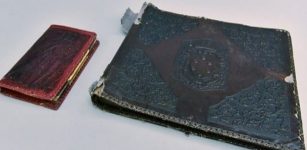 Nazi Photo Album Made Of Human Skin Found At Polish Antiques Market
History | Mar 18, 2020
Nazi Photo Album Made Of Human Skin Found At Polish Antiques Market
History | Mar 18, 2020 -
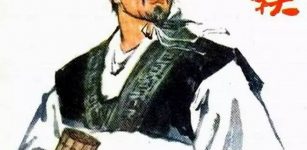 ‘Reforms of Shang Yang’ – Location Of Ancient Yueyang – Confirmed
Archaeology | Jan 25, 2016
‘Reforms of Shang Yang’ – Location Of Ancient Yueyang – Confirmed
Archaeology | Jan 25, 2016 -
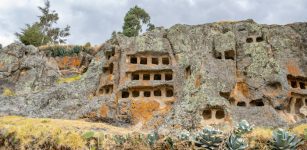 Fascinating Artificial Caves Of Ventanillas de Otuzco And Its Secret Passageways – Pre-Inca Necropolis Of The Cajamarca Culture
Featured Stories | Feb 5, 2022
Fascinating Artificial Caves Of Ventanillas de Otuzco And Its Secret Passageways – Pre-Inca Necropolis Of The Cajamarca Culture
Featured Stories | Feb 5, 2022 -
 Gallic Leader Vercingetorix In Victorious Battle Of Gergovia, 52 BC
Featured Stories | Jan 23, 2017
Gallic Leader Vercingetorix In Victorious Battle Of Gergovia, 52 BC
Featured Stories | Jan 23, 2017 -
 Mysterious Disappearance Of Louis Le Prince – Murder And Cover-Up?
Featured Stories | Jun 27, 2020
Mysterious Disappearance Of Louis Le Prince – Murder And Cover-Up?
Featured Stories | Jun 27, 2020 -
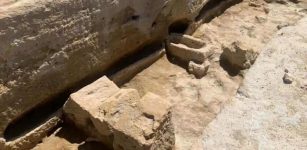 Rare Phoenician Necropolis Discovered In Andalucia, Spain Is Extraordinary, Scientists Say
Archaeology | May 2, 2022
Rare Phoenician Necropolis Discovered In Andalucia, Spain Is Extraordinary, Scientists Say
Archaeology | May 2, 2022 -
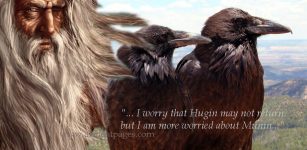 Huginn and Muninn: Powerful Ravens Of Odin, Supreme God In Asgard In Norse Mythology
Featured Stories | Dec 7, 2017
Huginn and Muninn: Powerful Ravens Of Odin, Supreme God In Asgard In Norse Mythology
Featured Stories | Dec 7, 2017 -
 Bronze Age Royal Tombs Unearthed In Ruins Of Ancient City Of Pylos, Greece
Archaeology | Dec 30, 2019
Bronze Age Royal Tombs Unearthed In Ruins Of Ancient City Of Pylos, Greece
Archaeology | Dec 30, 2019 -
 Mystery Of The Roman Tile Kiln At Brandiers Farm Solved!
Archaeology | Aug 18, 2023
Mystery Of The Roman Tile Kiln At Brandiers Farm Solved!
Archaeology | Aug 18, 2023 -
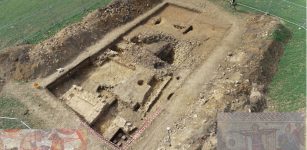 Amazing Finds At Rutland Roman Villa Reported By Archaeologists
Archaeology | Nov 29, 2022
Amazing Finds At Rutland Roman Villa Reported By Archaeologists
Archaeology | Nov 29, 2022 -
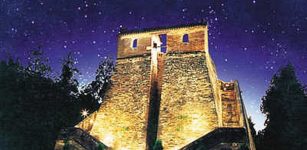 Gaocheng: China’s Oldest Observatory And Large Gnomon Installation Of The Ancients
Ancient Technology | Nov 5, 2016
Gaocheng: China’s Oldest Observatory And Large Gnomon Installation Of The Ancients
Ancient Technology | Nov 5, 2016 -
 Early European Farmers Traced To Anatolia, DNA Study Shows
Archaeology | Jan 5, 2016
Early European Farmers Traced To Anatolia, DNA Study Shows
Archaeology | Jan 5, 2016 -
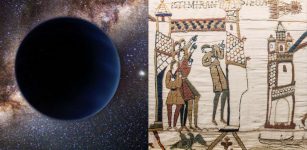 Famous Bayeux Tapestry May Solve The Planet Nine Mystery
Archaeoastronomy | May 5, 2018
Famous Bayeux Tapestry May Solve The Planet Nine Mystery
Archaeoastronomy | May 5, 2018 -
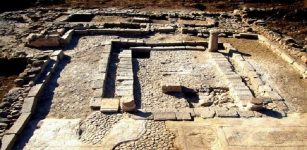 2,000-Year-Old Ruins In Mary Magdalene’s Town Of Magdala On The Shore Of The Sea Of Galilee
Biblical Mysteries | Dec 26, 2014
2,000-Year-Old Ruins In Mary Magdalene’s Town Of Magdala On The Shore Of The Sea Of Galilee
Biblical Mysteries | Dec 26, 2014 -
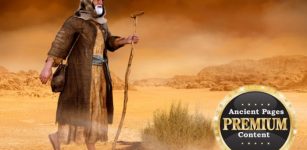 Moses’ Secret Knowledge Of Superior And Forbidden Technology – Hundreds Of Chariots Hovering Over Sinai – Part 1
Biblical Mysteries | Sep 21, 2020
Moses’ Secret Knowledge Of Superior And Forbidden Technology – Hundreds Of Chariots Hovering Over Sinai – Part 1
Biblical Mysteries | Sep 21, 2020 -
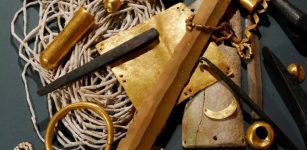 DNA Evidence For Early Contact Between Farmers And Pastoralists In Black Sea Region
Archaeology | Jul 20, 2023
DNA Evidence For Early Contact Between Farmers And Pastoralists In Black Sea Region
Archaeology | Jul 20, 2023 -
 Fascinating Ancient History Of Roman Shields
Featured Stories | Oct 1, 2018
Fascinating Ancient History Of Roman Shields
Featured Stories | Oct 1, 2018 -
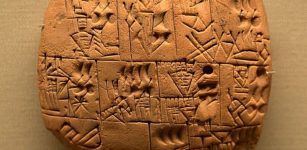 Uruk – Home To The Legendary Hero Gilgamesh
Featured Stories | Jun 6, 2021
Uruk – Home To The Legendary Hero Gilgamesh
Featured Stories | Jun 6, 2021 -
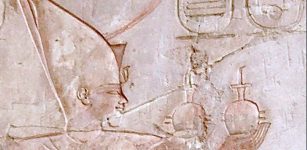 Magnificent Pre-Dynastic City Of Sais And Its Lost Neglected Ruins
Civilizations | Sep 29, 2020
Magnificent Pre-Dynastic City Of Sais And Its Lost Neglected Ruins
Civilizations | Sep 29, 2020


